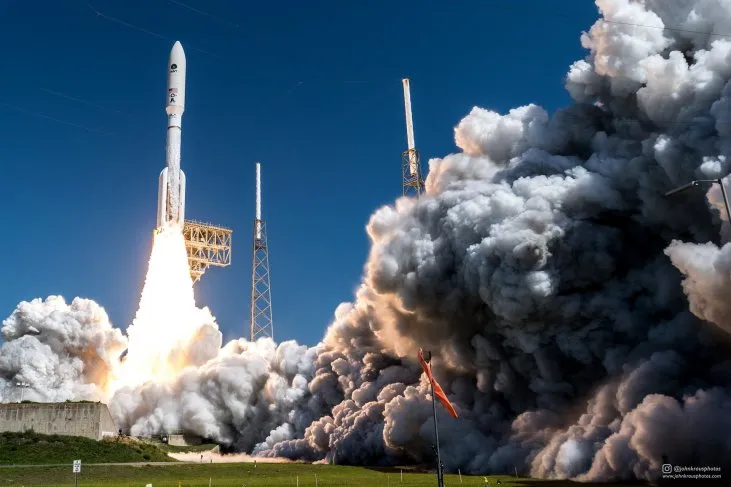Merritt Island, Florida — Apollo 11
On July 20, 1969, Merritt Island, Florida became the site of a spectacle that would forever alter the course of history. Thousands gathered, their faces a mixture of nervous anticipation and unwavering hope, as they turned their eyes toward the iconic black-and-white Saturn V rocket. Journalists frantically jotted notes, scientists exchanged hushed words, and families held their breath. The mission to the moon was not just about the triumph of human ingenuity—it was a test of humanity’s resolve. At the time, each Apollo mission carried a staggering $50 billion price tag (adjusted for inflation). The world watched as the Apollo 11 crew made history, and, for a fleeting moment, the possibility of failure loomed like a silent specter in the vastness of space.
Fast forward 55 years, and the narrative of space exploration has undergone a seismic shift. SpaceX, founded by Elon Musk with an audacious goal of making space travel more affordable and accessible, has rewritten the rules of the game. In 2021, the launch of the Inspiration4 mission marked the first orbital flight crewed entirely by tourists—a groundbreaking achievement that cost a fraction of the Apollo missions. With its Falcon 9 rocket, SpaceX has repeatedly defied expectations, not just with launches, but with landings, all while dramatically lowering the cost of space access. This is a new era, one where the impossible is being made possible, and history is being made with every flight.

Bigger Hurdles to Jump
Spacefaring ambitions, however, are not without their challenges. As we look toward the future, the Moon’s gravity and untapped resources make it a prime candidate for serving as humanity’s stepping stone to Mars. NASA’s Artemis program envisions a permanent lunar base by 2029, a $93 billion undertaking that will pave the way for future lunar and Martian exploration.
But cost isn’t the only obstacle in humanity’s journey to the stars. While lunar exploration has inspired generations, there’s an even bigger challenge looming on the horizon: moon dust. During the Apollo missions, astronauts faced a significant problem: lunar regolith, the fine, abrasive dust on the Moon’s surface, clogged equipment, damaged spacesuits, and posed serious threats to machinery. This wasn’t just a minor inconvenience—it was a tangible threat to the success of future missions.
However, scientists have been busy working on a solution. Enter the Electrodynamic Dust Shield (EDS), a technology that may sound more science fiction than science fact. Developed from a concept introduced in 1967, EDS uses transparent electrodes to create static electricity, lifting and removing dust from surfaces like spacesuits, solar panels, and even camera lenses. While it’s still being tested aboard the International Space Station (ISS), the results are promising, with the ability to remove lunar dust within seconds—a potential game-changer for future missions.
Spaceflight is Safer Than Ever
In the public imagination, astronauts have always been the brave, risk-taking heroes of the space race, confronting the unknown with every mission. But NASA, today, has a different philosophy. Safety, innovation, and cost-efficiency are at the forefront of modern spaceflight.
In the mid-1960s, NASA’s budget soared to nearly $5.9 billion, or approximately 4.4% of the federal budget (equivalent to about $55.7 billion today). The space race was a national obsession, and every mission was a bold statement. Fast forward to today, and NASA’s budget stands at about $25.4 billion—roughly 0.48% of the federal budget. A major disaster, like another Challenger tragedy, would drastically shrink this figure, which is why the agency has prioritized safety over spectacle.
Thanks to decades of research into materials science, spaceflight is now safer than ever. Ceramics, silica-based fibers, and advanced composites are now used to protect spacecraft during re-entry, making the technologies pioneered during the Space Shuttle program seem almost quaint in comparison. The next frontier in space safety, however, may lie in habitation—creating environments in which astronauts can live and work in space for extended periods without fear of radiation exposure or extreme temperature shifts.
One company leading the charge is Redwire, a Texas-based startup that’s working on 3D printing and utilizing lunar regolith to build protective structures on the Moon’s surface. This could drastically reduce the need to transport materials from Earth, helping to create sustainable habitats on the Moon—and eventually on Mars.
The Future of Space Maintenance: Automation to the Rescue
While lunar dust and cosmic radiation are major concerns for long-term space travel, the challenges of space junk and orbital debris cannot be overlooked. As space tourism grows and the idea of a space hotel inches closer to reality, we need more sustainable methods to repair and maintain satellites and other space infrastructure. Enter automated space maintenance.
In collaboration with the U.S. Space Force, Northrop Grumman recently demonstrated the Victus Nox exercise, a groundbreaking feat where they successfully deployed a satellite from a warehouse and activated it in orbit within five days—automatically. This represents the first steps toward creating a future where satellite maintenance, and perhaps even deep-space repairs, can be done without human intervention. Add to this the ongoing development of self-healing materials and the future of automated, space-based repairs looks incredibly promising.
A Long Road Ahead
In just a week, we’ll mark the 52nd anniversary of the last human mission to the Moon. On December 14th, 1972, Apollo 17 astronauts Eugene Cernan and Harrison Schmitt became the last humans to walk on the lunar surface—a feat that has remained untouched ever since. Since the collapse of the Soviet Union and the waning public interest in space exploration, the momentum has slowed. But that may soon change. With private companies like SpaceX leading the charge, the dream of a spacefaring civilization is closer than ever.
Companies to Watch in Space Exploration
- SpaceX
- Ticker: TSLA (Elon Musk’s other company)
- Market Cap: $800 Billion
- Details: SpaceX continues to lead the charge in reusable rocket technology, drastically reducing the cost of spaceflight. Its Starship project promises to revolutionize interplanetary travel, with potential missions to the Moon and Mars.
- Source: Yahoo Finance
- Blue Origin
- Ticker: N/A (Privately held)
- Market Cap: Estimated at $13 Billion
- Details: Founded by Jeff Bezos, Blue Origin focuses on lowering the cost of space travel with reusable rockets, similar to SpaceX. Its New Shepard and upcoming New Glenn rockets are designed for both commercial and human spaceflights.
- Source: Yahoo Finance
- Northrop Grumman
- Ticker: NOC
- Market Cap: $70 Billion
- Details: Northrop Grumman’s contributions to space technology extend beyond military applications, focusing heavily on satellite maintenance and innovative projects like the Victus Nox mission.
- Source: Yahoo Finance
- Redwire
- Ticker: RDW
- Market Cap: $1.4 Billion
- Details: Redwire is at the forefront of building the infrastructure for off-world living. The company is working on 3D printing technology to build sustainable lunar habitats using local resources.
- Source: Yahoo Finance
As we look toward the next chapter in space exploration, these companies—each with their innovative approach—will undoubtedly play pivotal roles in humanity’s journey beyond the stars. The future is looking ever brighter, and the next giant leap may not be as far off as we think.


0 Comments